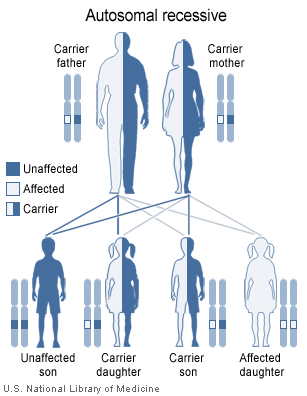Maple syrup urine disease
For patient information, click here Template:DiseaseDisorder infobox Template:Search infobox Editor-In-Chief: C. Michael Gibson, M.S., M.D. [1]
Overview
Maple syrup urine disease (MSUD) is an autosomal recessive metabolic disorder of amino acid metabolism. It is also called branched chain ketoaciduria.
This amino acid acidopathy is due to a deficiency of the metabolic enzyme branched chain α-keto acid dehydrogenase (BCKDH) leading to a buildup of branched-chain amino acids (leucine, isoleucine, and valine) in the blood and urine.
Presentation
Characterized by an infant with sweet-smelling urine with an odor similar to that of maple syrup, infants with this disease seem healthy at birth but if left untreated suffer severe brain damage and eventually die. Because of the founder effect, MSUD has a much higher prevalence in children of Amish and Mennonite descent. [1] [2]
From early infancy, the condition is characterized by poor feeding, vomiting, lack of energy (lethargy), seizures, and mental health issues. The urine of affected infants has a distinctive sweet odor, much like burned caramel, that gives the condition its name.
Classification
Maple syrup urine disease can be classified by its pattern of signs and symptoms or by its genetic cause.
The most common and most severe form of the disease is the classic type, which appears soon after birth. Variant forms of the disorder appear later in infancy or childhood and are typically less severe, but still involve mental and physical retardation if not treated.
There are several variations of the disease:
- Classic Severe MSUD
- Intermediate MSUD
- Intermittent MSUD
- Thiamine-responsive MSUD
- E3-Deficient MSUD with Lactic Acidosis
Treatment
Treatment of the MSUD, like diabetes, requires careful monitoring of blood chemistry and involves both special diet and frequent testing.
A diet with minimal levels of the amino acids leucine, isoleucine, and valine must be maintained in order to prevent neurological damage. Usually, patients, or parents of patients are assisted by a physician or dietician. This diet must be adhered to strictly and permanently. However, with proper treatment those afflicted are able to live healthy, normal lives and not suffer the severe neurological damage that characterizes the untreated disease.
Genetics

Maple syrup urine disease affects an estimated 1 in 185,000 infants worldwide.
Mutations in the following genes cause maple syrup urine disease:
- BCKDHA (Online Mendelian Inheritance in Man (OMIM) 608348)
- BCKDHB (Online Mendelian Inheritance in Man (OMIM) 248611)
- DBT (Online Mendelian Inheritance in Man (OMIM) 248610)
- DLD (Online Mendelian Inheritance in Man (OMIM) 238331)
These four genes produce proteins that work together as the branched-chain alpha-keto acid dehydrogenase complex. The complex is essential for breaking down the amino acids leucine, isoleucine, and valine, which are present in many kinds of food (particularly protein-rich foods such as milk, meat, and eggs).
Mutations in any of these genes reduce or eliminate the function of the enzyme complex, preventing the normal breakdown of leucine, isoleucine, and valine. As a result, these amino acids and their by-products build up in the body.
Because high levels of these substances are toxic to the brain and other organs, this accumulation leads to the serious medical problems associated with maple syrup urine disease. However recent breakthroughs have yielded treatments through liver transplants and gene therapy is on the rise.
See also
References
Additional Resources
- Maple syrup urine disease at NLM Genetics Home Reference
- Maple Syrup Urine Disease (Overview on NLM)
Template:SIB
Template:Endocrine, nutritional and metabolic pathology
de:Ahornsirupkrankheit
ms:Penyakit Kencing Sirap Maple